DEEP INTO SOUTH AFRICA, THE GREAT TREK AND THE VOORTREKKER MONUMENT.
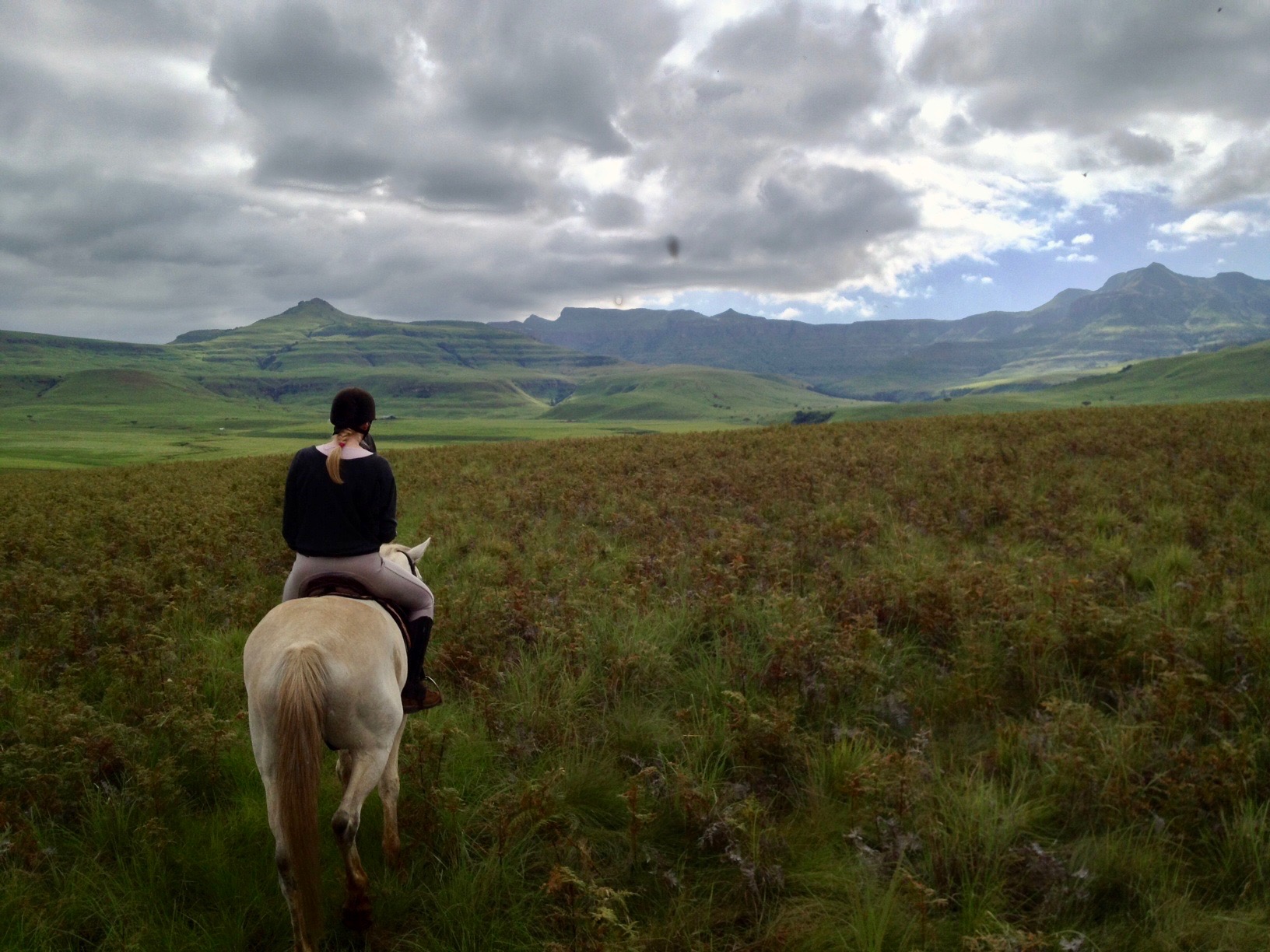
Clearly signposted, 3km south of Pretoria in South Africa, stands an impressive 40 metre tall granite structure. This massive art deco style Monument, located on a hilltop commemorates the pioneers- Voortrekkers, who leaving the Cape Colony, journeyed north across the country over the coastal mountains, to find new homes in the heart of African veld.
It became known as the Great Trek and in their honour, the Voortrekker Monument was erected.
Dutch East India Company established in 1652 a victualing station in Cape. It had become home to a large population of citizens, who after completing their contracts remained on a very good terms as free citizens in Dutch territories.
Cape gradually became populated by about 26,720 people of European descent and encompassed about 260,000 km2.
Because the land was strategic in relation to Indian maritime traffic, Great Britain occupied the Cape Colony by force, and around 1815, assumed permanent control.
The alienation of the Boers began, with the rise of the administrative complexities.
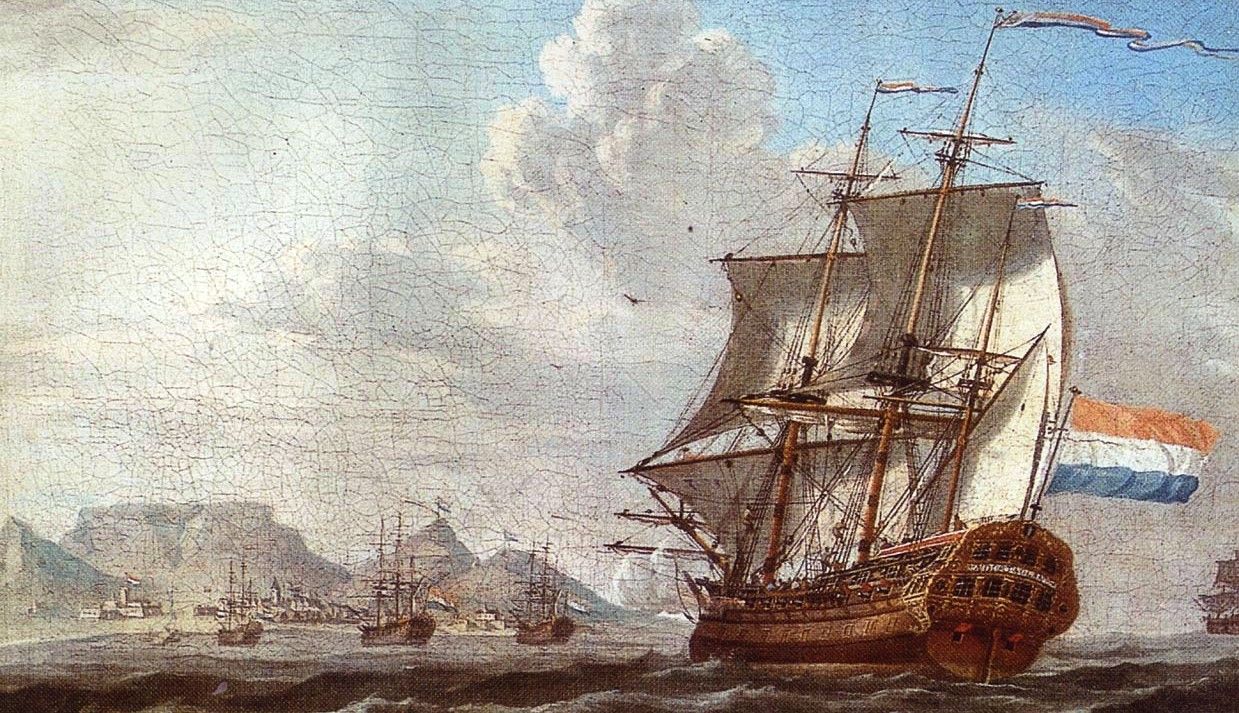
dutch east india company ships sailing to the cape colony
Dutch-speaking people were dissatisfied with the current state of affairs, and blamed the British government at the Cape for unwarranted intrusion into their way of life. Destroying their free and independent state, their promised land, where the Boer families would be free and independent people.

Cape-Dutch style homes

Cape-Dutch style homes
British government imposing their rule, made several administrative changes such as; official imposition of the English language, giving all native inhabitants but slaves the rights of "citizens”, and finally deciding to abolish slavery in all its colonies in 1834.
Furthermore, land became scarce and owning it was expensive. Some in the Boer community began to consider selling their farms and trekking into the interior of Southern Africa to live completely independent from British rule. And so, they resolved on their own to trek beyond the colony's borders.

Morning coffee
In the mid-19th century fleeing from the British rule, the Boer families ventured deep into South Africa's unmapped interior. The Great Trek took the form of a mass migration.
It was a start to an era of expansionism, land seizure, labour coercion and bloodshed.
Between 1835 and 1854 under various leaders, thousands organised in number of trek parties, caused a tremendous social upheaval.
Voortrekkers wanted to gain the access to lands and ports beyond the sphere of British power.

Trek map

Trek
Voortrekkers wanted to gain the access to lands and ports beyond the sphere of British power.
They emigrated in hope of restoring political, cultural and economic unity, with the whole family being drawn into attack and military defence, they ploughed on through treacherous terrain.
Eliminating all obstacles in their path and rupturing the lives of hundreds of thousands of indigenous people.

Colonial history rests on the idea of the 'vacant land' myth.
The Boers believed that the land was theirs for the taking, because it appeared deserted or abandoned.
However, most of the Bantu and KhoiKhoi people from the area used land in rotation, migrating through various grazing-grounds, often leaving large sections 'empty'. Pastoralists simply moved their herds to greener pastures, appearing to leave a grazing ground not in current use.
Afrikaner mythology had become a central tenet of both British and Afrikaner identities. It also claims that the Boers had rescued the scattered tribes from the forces of Shaka and initially gave them protection.
The myth had been transformed to serve The Apartheid Government as a justification for the capture and settlement of Bantu land.

The independent Boer republics were established formally north of the Orange and Vaal rivers after the 1852 Sand River Convention and 1854 Bloemfontein Convention.
On the 16 of December 1938, three descendants of the Voortrekker leaders laid the cornerstone for the Voortrekker Monument, It has been designed by architect Gerard Moerdijk and in 2011 became a National Heritage Site. It rests in the middle of the 3.4 km2 Nature Reserve, on top of a hill overlooking Pretoria.

The Voortrekker Monument
After passing through the gate with a spear motif - assegai, one is inside of a big laager made out of decorative granite and depicting 64 ox-wagons, used at the Battle of Blood River.
There is a statue on each outside corner of the Monument, sculptor Anton van Wouw is paying homage to the Voortrekker leaders and to the strength and courage of the Voortrekker women, the triumphant carrier of Western civilisation. A bronze sculpture of a woman and her two children situated at the foot of the Monument and the dangers of Africa symbolised by the wildebeest chiselled on both sides of the it.

The statue of a Voortrekker woman
Approaching the building, its main entrance leads into a massive domed space called the Hall of Heroes.
Made from yellow belgian glass, four huge, arched windows are flanking the space with an intrinsic part of the design, the biggest in the world historical marble frieze. The set of panels illustrates Voortrekkers every day life, religious beliefs, work methods. The history of the Great Trek in 27 bas-relief panels and key scenes starting from the first treks in the year 1835 up to the year 1852, signing of the Sand River Convention.
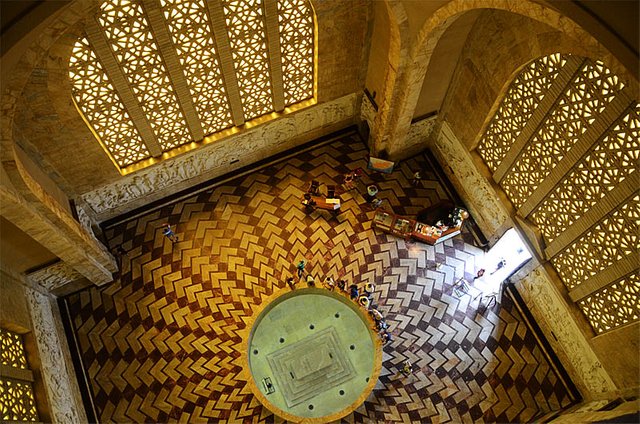
Inside the dome

The panels

The panels
Cenotaph Hall can be viewed through a large circular opening in the centre of the Hall of Heroes floor. It displays artefacts from the Great Trek, its walls are decorated with flags of different Voortrekker Republics and tapestries, consisting of more than three million stitches.
In the niche against the northern wall, commemorating the symbolic ox wagon trek ending at the monument hill, stands a lantern with a flame burning ever since 1938.
Through the opening in the monument's huge upper dome, its most prominent aspect, a ray of sunlight penetrating downwards, highlights words encrypted on the cenotaph. It symbolises God's blessing on the lives and endeavours of the Voortrekkers. Exactly at twelve o'clock on 16 December annually, shines on the focus point - the words 'Ons vir Jou, Suid-Afrika', Afrikaans for 'Us for you, South Africa'. It is the date that the Battle of Blood River took place and was previously commemorated as the Day of the Vow.
A copy of the anthem "Die Stem" and land deal between the Trekkers and the Zulus- Trekker Vow on 16 December 1838 is buried under the foundation stone.

Cenotaph
*Photographs taken by @highonthehog
*Other sources : linked below photographs.
Derek Hook A Critical Psychology of the Postcolonial: The Mind of Apartheid, Routledge 2012
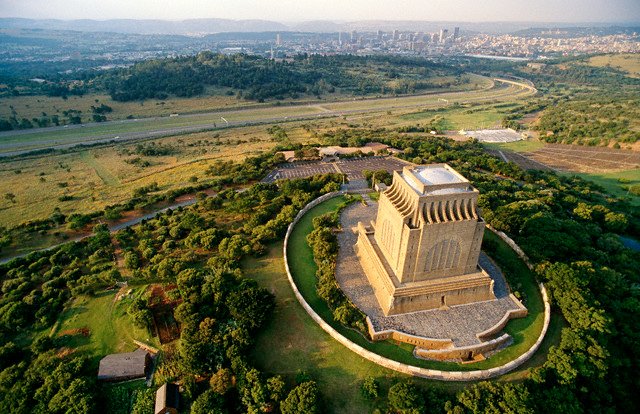
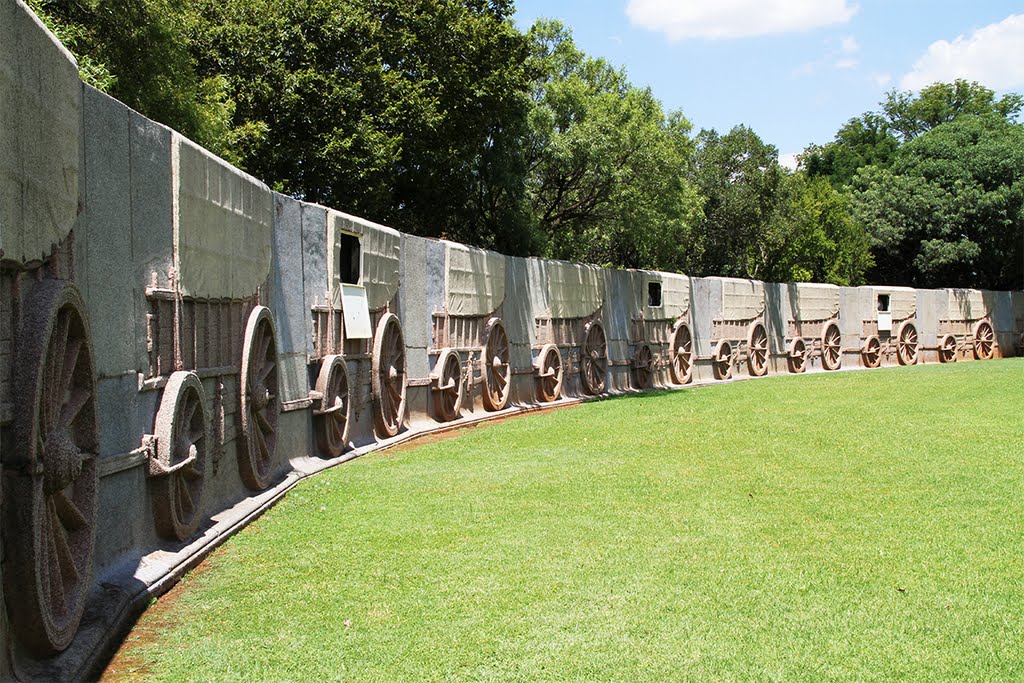
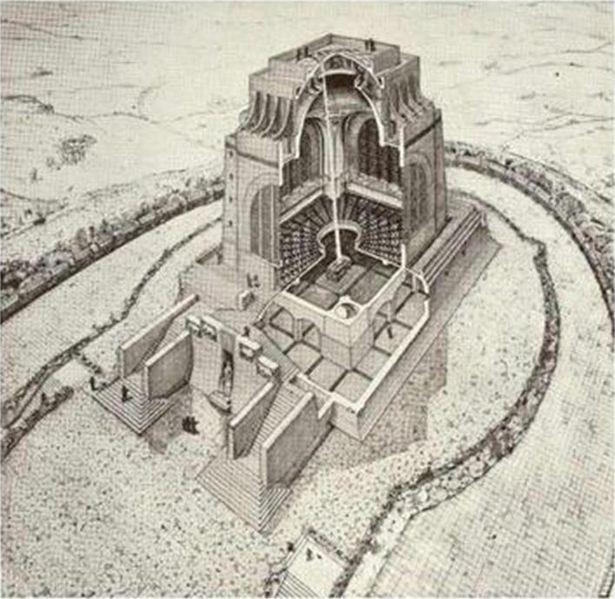
Being A SteemStem Member
Many thanks :*
Amazing as always! I love the way u write your posts!
Greetings
Dzieki kochana , sciskam mocno.
how all time, nice post and nice pics... congrats
Great informative post. Tourism is every thing with out tourism is nothing. Great innovative treasure you shown in the post. Thanks for sharing.
Thanks for kind words .
Hiya, just swinging by to let you know that this post made the Honorable mentions list in today's Travel Digest!
Awesome , many thanks!
I remember reading this in my university days... The Great trek was the begining of exploitations of South Africans
Perhaps more brutal continuation, I'm pretty sure it started much earlier with the colonists arriving to the cape.
wish be there
actually me too :)
it's an interesting post, and of course so good one from you! First pic and inside the dom pic are amazing! :)
butt of a horse is still my favourite ;)
hahah yes! that is the best opening photo on steemit EVER :D
Amazing, Thank you for sharing.
heh, I never miss a chance to write some stuff about south africa :P
Congratulations! This post has been upvoted from the communal account, @minnowsupport, by highonthehog from the Minnow Support Project. It's a witness project run by aggroed, ausbitbank, teamsteem, theprophet0, someguy123, neoxian, followbtcnews, and netuoso. The goal is to help Steemit grow by supporting Minnows. Please find us at the Peace, Abundance, and Liberty Network (PALnet) Discord Channel. It's a completely public and open space to all members of the Steemit community who voluntarily choose to be there.
If you would like to delegate to the Minnow Support Project you can do so by clicking on the following links: 50SP, 100SP, 250SP, 500SP, 1000SP, 5000SP.
Be sure to leave at least 50SP undelegated on your account.